If you’d like to read up on chain and sprocket replacement, check out this post. If you’d like to know more about chain care in general, this section is for you.
Are you a motorcycle enthusiast looking for a better understanding of chain maintenance? Keeping your chain in good condition is essential for the longevity and performance of your bike, but it can be difficult to know where to start. From chain lubrication to proper chain tension and adjusting a motorcycle chain, this blog post will guide you through the basics of motorcycle chain maintenance.
The motorcycle chain is like the heart of the engine, transferring power from the engine to the back wheel and allowing you to accelerate and decelerate. Chains are made up of several links that are connected together, and come in different sizes and styles. In order to keep your chain in good condition, it is important to ensure that it is properly lubricated and tensioned. Lubricating the chain helps reduce friction, which in turn causes less wear and tear on the chain. The appropriate amount of motorcycle chain tension helps to make sure the chain is tight and not too loose, which improves the performance of the bike and can help to prevent the chain from coming off. This is why a motorcycle chain adjustment is important! Doing this preventatively will greatly reduce your maintenance cost over the long run.
By following the steps outlined in this blog post, you will be able to keep your motorcyclechain in top shape and avoid costly repairs. So, if you’re ready to get your motorbike in tip-top shape, let’s get started on understanding the basics of motorcycle chain maintenance!
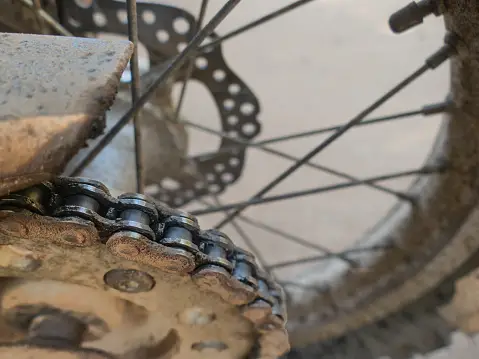
Chain Maintenance
Maintaining a motorcycle chain is an important part of keeping your bike running safely and efficiently. The following steps should be taken regularly to ensure your chain is in good working order:
- Clean the chain regularly. Using a soft brush, gently scrub away any dirt, dust, or debris that has built up on the chain.
- Check the tightness of the chain. Use a ruler to make sure the chain is at the right tension. It should be tight enough so that you cannot move it more than an inch or two.
- Lubricate the chain. Use a quality chain lubricant to ensure the chain runs smoothly and does not wear down.
- Check for any signs of wear or damage. Inspect the chain for any cracks, rust, or other signs of damage. Replace any damaged parts as necessary.
- Check the sprockets. Make sure the teeth on the sprockets are in good condition. If the teeth are worn down, they may need to be replaced.
5 Minute Quick Clean and Lube
The quickest and wasiest method for cleaning and lubing motorcycle chain:
Start with 2 rags that you are willing to sacrifice, 2 disposable gloves, one can of degreaser – WD40 or a WD40 alternative will work as well- and one can of chain lube. Put the motorcycle on the rear stand/center stand. Spray the degreaser into the rag, and run it along the chain by spinning the rear wheel (by hand not by running the engine!).
Then dry the chain as much as possible. Finally, spray chain lube into the 2nd rag, and run it along the chain. Throw out the rags and gloves, head inside, and you’re done.
If you clean and lube your chain after a ride, rather than before it, there are a few advantages. Some say that the lubrication will have more time to penetrate the O rings. Others say that a warm chain is easier to clean. These statements may be true, but my logic for the post-ride chain care routine is a bit vainer.
Load up a chain with fresh lube and then go for a ride, you’re sure to get some of that lube flying off the chain and all over you! If you do your chain maintenance after a ride, the excess lube has time to either set up, drip off or partially evaporate.
[recent_post_carousel design=”design-1″]
Chain Types
Speaking of O rings, what do they do and how do you know if your chain uses them? Initially, mechanical chains used plates that were pressed together using pins and rollers which allowed for independent movement. Grease and lubricant aided in long life and quiet operation.
In the 1970s manufacturers began using O rings between the chain plates to hold more grease in the pin and roller areas. The addition of O rings allows for more time between services and greater chain life.
You will know if you have an O ring chain by a quick visual check. If you look closely between the links, you can see the small rubber O rings.
Sounds great, right? Yes and no. O-ring chains are heavier, aren’t as efficient, and cost more than standard chains. You will still find standard chains in off-road and racing applications.
How To Adjust Motorcycle Chain
Some motorcycle manufacturers recommend checking chain tension without the weight of a rider on the bike. Some manufacturers want the bike on the side stand, some want the bike on the center stand/rear wheel off the ground, and others want the bike off the stand, under its own weight. Unfortunately, there isn’t one standard adopted by all brands.
Check your manual for specifics about how to check, and what free play measurement is best. Take a measurement along the bottom run of the chain, midway between the front and rear sprocket. Most bikes call for about an inch to 1.5” of up-and-down free play.
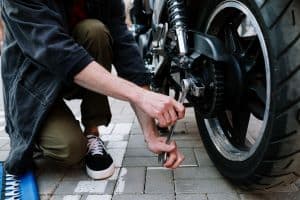
If your chain is too loose, follow these steps for adjusting a motorcycle chain:
- Break loose rear axle nut (remove cotter pin)
- Put the bike on the center stand or paddock stand (if needed)
- Loosen locking nuts on adjusters (if equipped)
- Turn adjusters ¼ to ½ turn on each side until chain free play is in spec
- Tighten down locking nuts
- Torque axle nut and replace the cotter pin
Motorcycle Chain Tension Check
*Many motorcycles have hash marks manufactured into the swing arm to ensure each side is adjusted equally. If your bike doesn’t have that feature, you may need a rear wheel alignment tool. The tool simply measures the distance from the swingarm pivot to the rear axle, so you check that both sides are equal
**Some motorcycles have eccentric adjusters on either side of the swingarm so both sides are equally adjusted at the same time. If your bike has these, your day just got much easier!
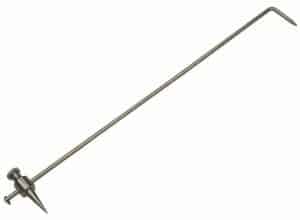
Rear wheel alignment tool
The specification is typically listed as a distance measurement of chain deflection under light pressure. Check your owner or service manual for specifics but a quick way to check is to balance the bike on its wheels with one hand on the handlebar and slightly lift up with your foot on the bottom run of the chain, midway between the front and rear sprocket. If the chain lifts about 1 – 2 inches, you are pretty close.
This quick check of chain free play isn’t scientific however if you do it often enough, you’ll notice when something isn’t normal. If the chain starts to contact the swingarm under light pressure, but it never did before, adjustment is probably needed.
Chain Free Play
It is interesting to note why motorcycle chains need so much free play. You’d think that free play can lead to unwanted noise, a snatchy throttle feel, or premature wear. Chain-free play does impact these areas however, it is necessary when you consider rear swingarm movement.
As a motorcycle’s suspension flexes under rider weight and road imperfections, the distance from the swingarm pivot to the rear axle actually changes.
Once underway, if a chain is too tight, it will damage the transmission output shaft seal. If the chain is too loose, it may skip a tooth or dislodge from the sprocket completely! This is why a motorcycle chain adjustment is a key part of your chain maintenance routine.
Motorcycle Chain Loose Symptoms
It is important to check the chain tension of your motorcycle regularly to ensure that it is performing at its highest level. Having a loose chain can cause a variety of problems, such as poor acceleration and handling, as well as a noisy chain that could result in premature wear. Here are some signs that your motorcycle chain is too loose:
- Unusual movement of the chain when accelerating or decelerating
- Heavy vibration when riding at higher speeds
- Chain jumps up and down when the bike is tipped on its side
- High levels of noise coming from the chain as it moves
- Difficulty in shifting gears due to lack of tension
- Visible sagging of the chain when the bike is upright
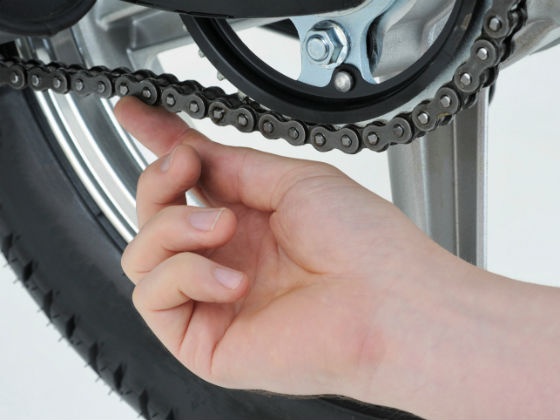
Final Thoughts
To keep your chain clean, lubed, and properly tensioned takes very little time. Just a few minutes after a ride, once a month or so is great. Periodically, you may want to do a more thorough cleaning, but in the middle of riding season, spend your time enjoying the ride. Only covering one aspect of motorcycle maintenance, we thought it important to mention the other two big ones. Motorcycle oil changes and how to monitor your tire health.




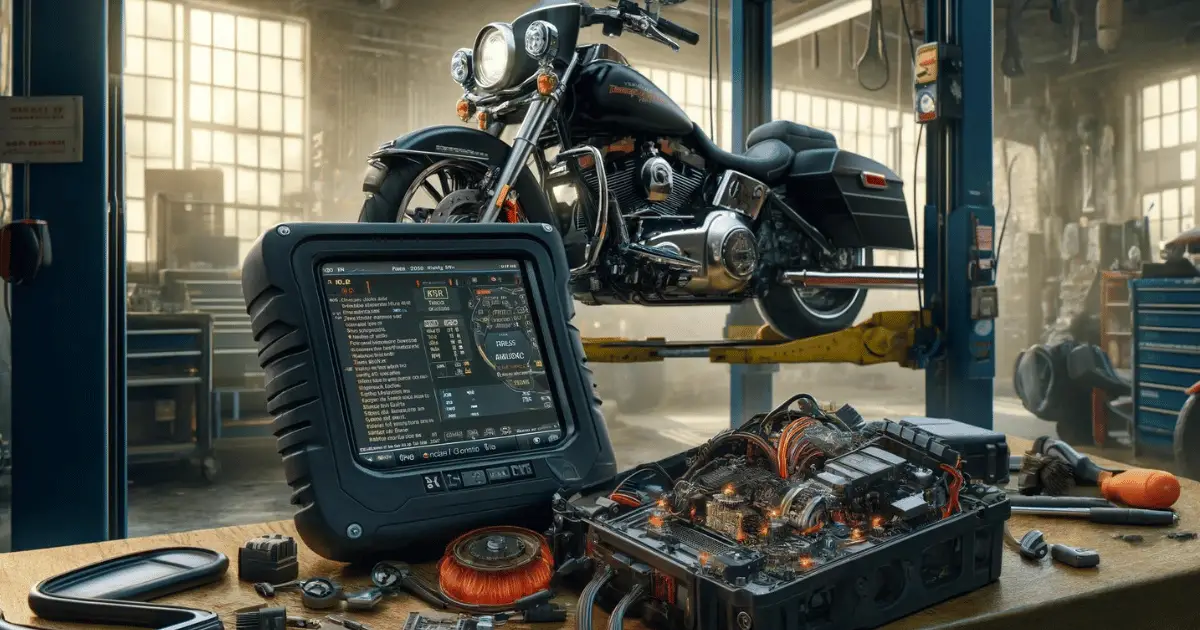
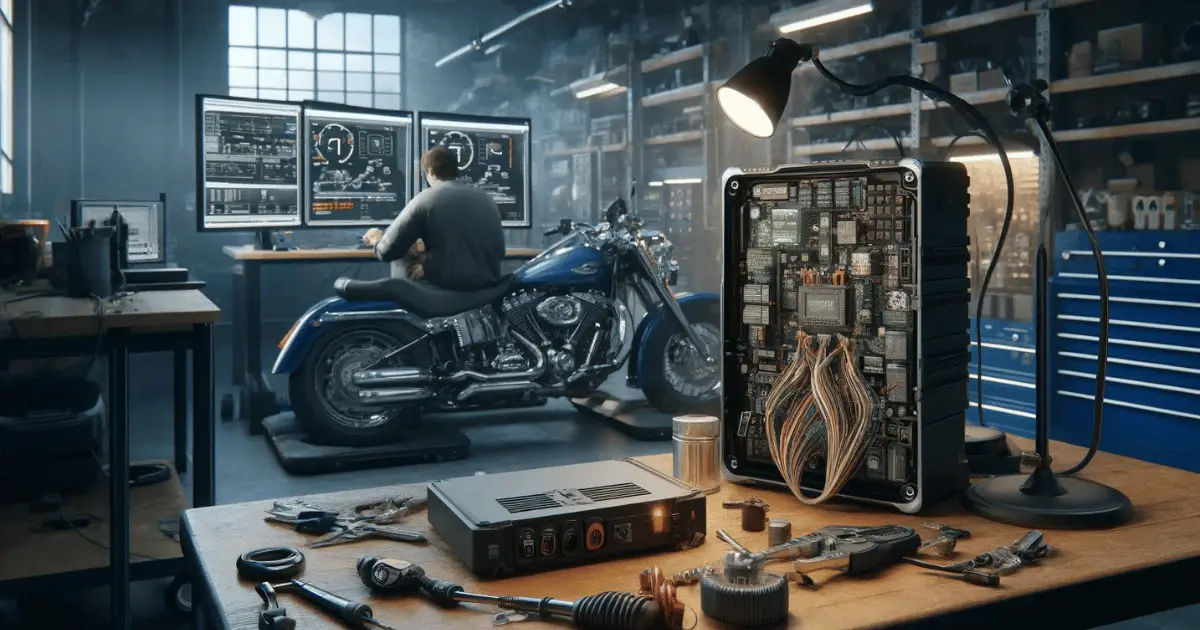
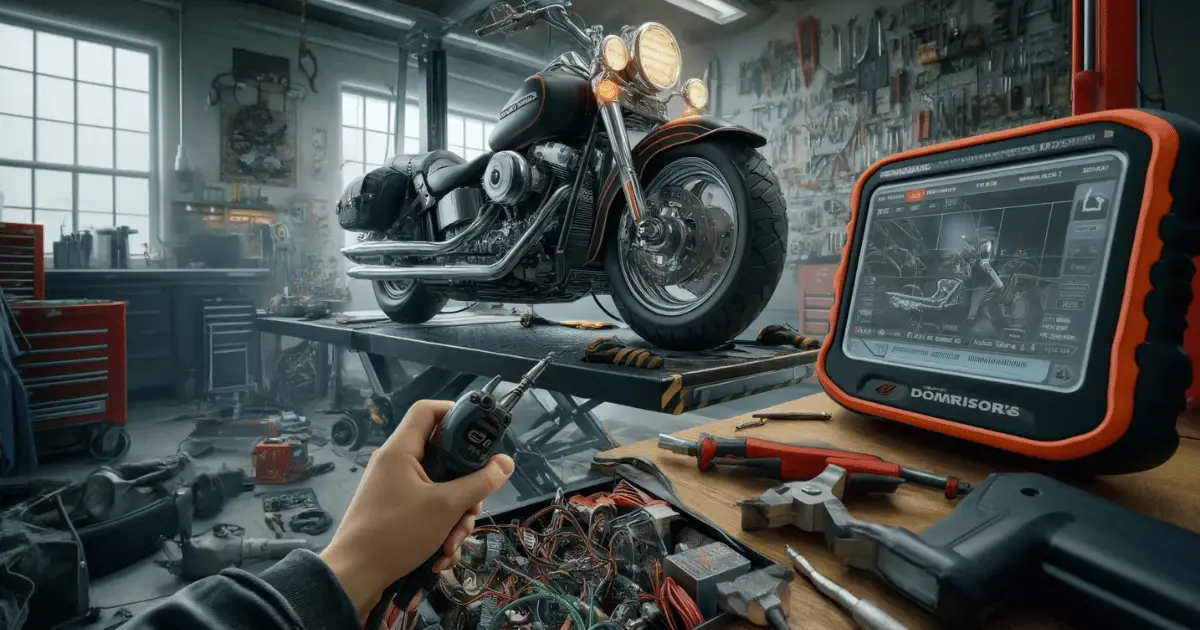
Leave a Reply
You must be logged in to post a comment.